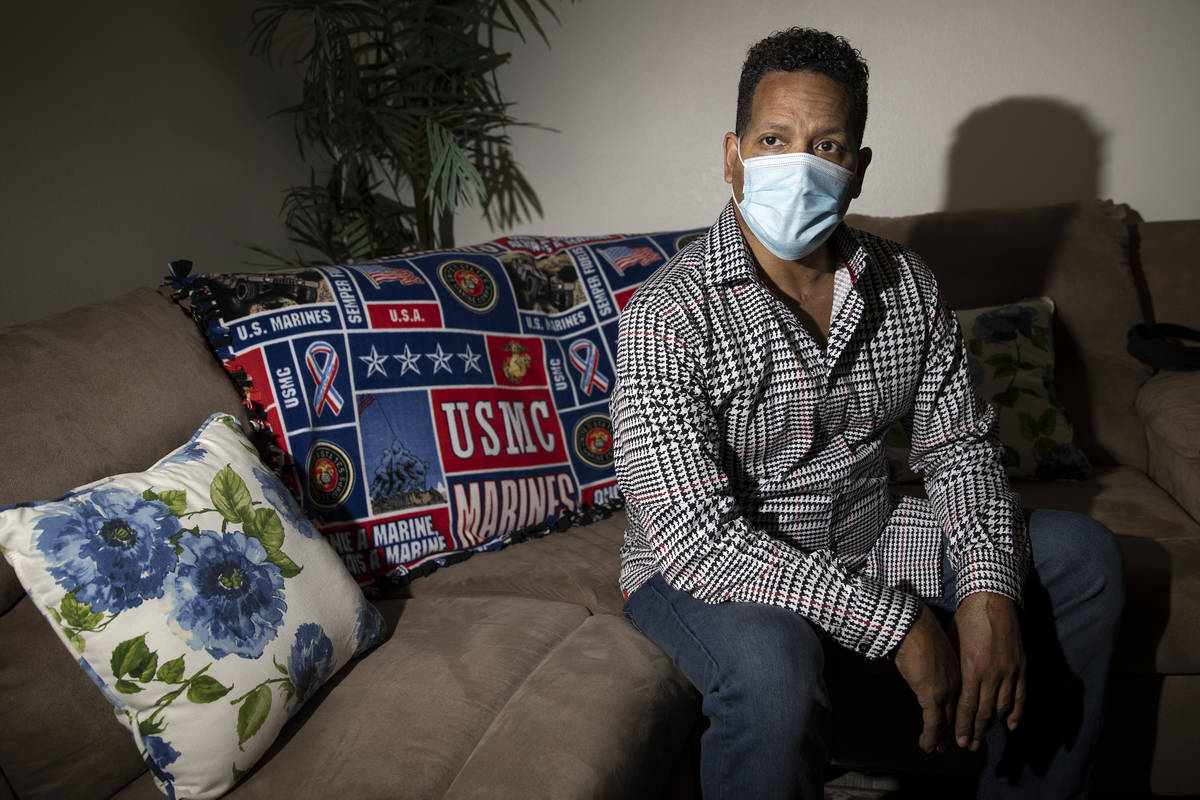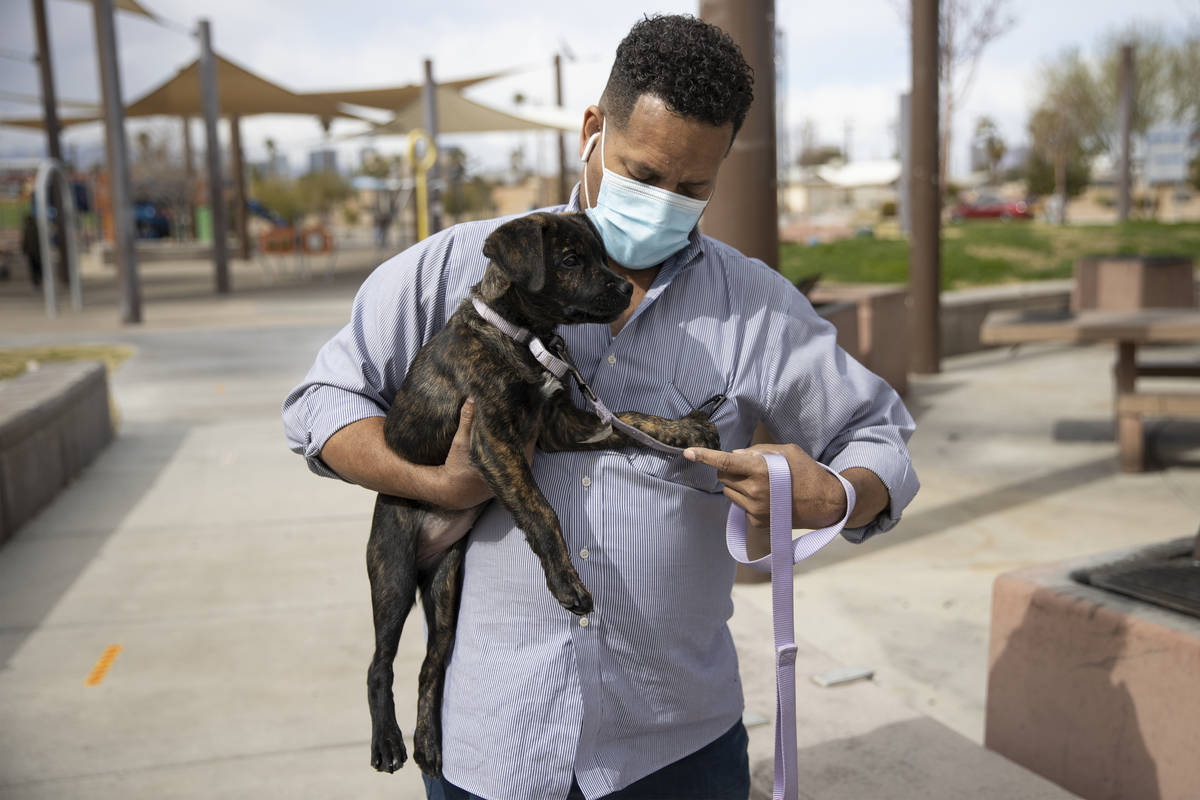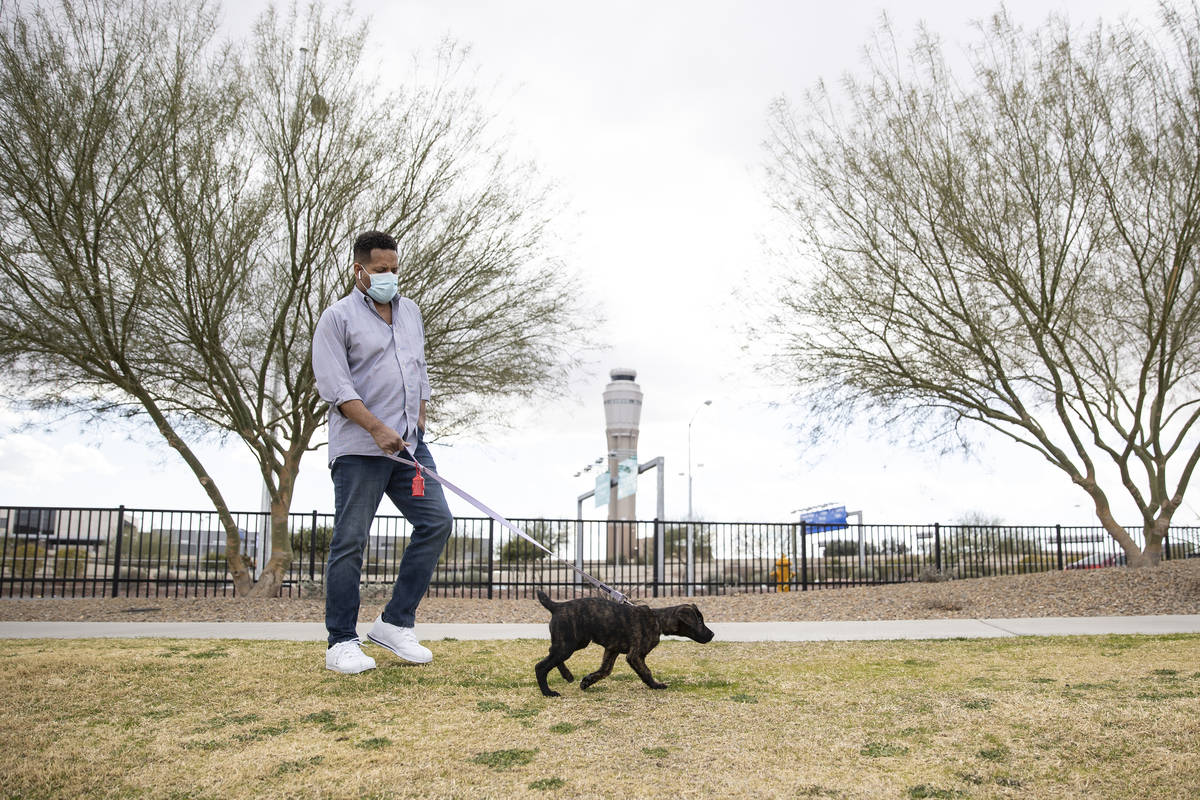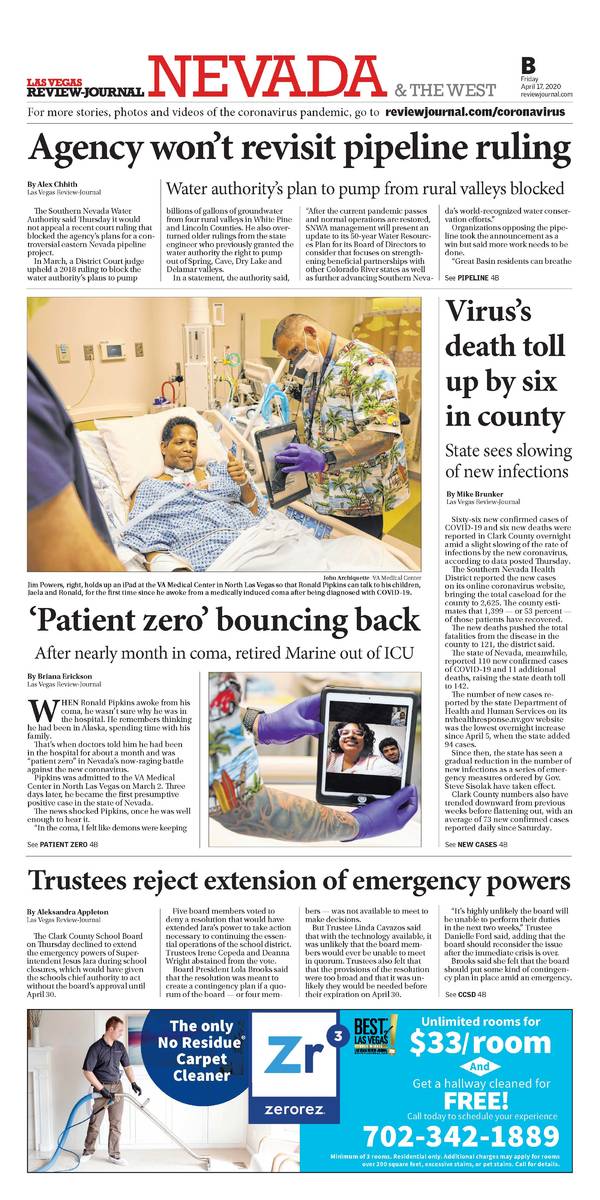Before thousands died in Nevada, he was ‘Patient Zero’
Just shy of a year after he became “Patient Zero” in Nevada’s COVID-19 outbreak, Ronald Pipkins is still battling the lingering effects of the coronavirus. He gets up to do something but forgets why. When he exercises on the bike for 10 minutes, he hurts for five days. And he struggles with simple tasks.
“My body’s not ready yet,” the retired Marine said. “And that’s kind of depressing because I’m a Marine.”
On March 5, Pipkins became the first confirmed COVID-19 case in Nevada and the entire VA system, his doctors said. He spent nearly a month in a coma and developed severe respiratory issues before making a stunning recovery — though the disease continues to inflict a toll on him.
More than 293,000 have tested positive for the virus in Nevada and nearly 5,000 have died. The VA in Southern Nevada had directly cared for 1,737 positive patients as of Thursday. Of those, more than 94 percent have recovered.
Pipkins, 56, is in that category, though he said last week from his one-bedroom apartment in Las Vegas that he has a long way to go before he considers himself fully recovered.
“I still have a lot of healing to do,” he said.
Pipkins’ story garnered statewide attention after his recovery, and he later worked with Gov. Steve Sisolak on public service announcements about the seriousness of the disease. He still wants to remind Nevadans about the deadly risks of contracting the virus.
“People need to understand just how hard it is to actually get this virus and how dangerous it is,” he said.
Recalling a tough battle
And though his memory is foggy, Pipkins is putting together some of the missing pieces almost a year later.
“I’ve been reminiscing a lot about that time,” he said, straightening his collared shirt and inadvertently revealing the scar from a tracheostomy that doctors performed to help him breathe. As he spoke, his 3-month-old brindled boxer, Leia, licked his face mask.
He got the jittery puppy he named after the famous “Star Wars” character as a therapy dog to help him deal with the long-term effects of the disease he knew little about until it nearly killed him.
At the time he became ill, Pipkins was working for the VA in a finance office by McCarran International Airport and driving for Lyft most evenings. The new coronavirus was then an ominous but distant threat ravaging Asia.
He became sick during a trip to Washington to visit his son Ron Jr.’s future school in the central part of the state. During a stopover in Seattle, Pipkins went to a pub and played blackjack, which is where he believes he contracted the virus.
“If there would have been information to be careful when you travel, to wear a mask, I would have done that, and I would have been at that casino with a mask on,” he said. “But that was not protocol.”
When he got home, Pipkins felt lethargic. It was Lent, and he had resolved to exercise each day, but he struggled to do push-ups and quickly lost 6 pounds.
He doesn’t remember going to work on March 2, the day he later checked himself into the VA hospital in North Las Vegas. It was a decision he believes saved his life.
When he arrived, he was feverish, his breathing was labored and his oxygen levels were low.
“They think that it’s pneumonia,” Pipkins texted his daughter, Jaela, now 20.
Pipkins said he didn’t feel scared until he was wheeled into a hospital room. A friend, Tina, came by and together they prayed for his health and safety.
And that’s the last thing he remembers.
A monthlong coma
His fever later spiked to 107 degrees, prompting doctors to move him to the intensive care unit and test him for the coronavirus. Initially, they treated it similarly to the way they would Ebola or SARS, said Dr. Myron Kung.
Pipkins had been treated in the hospital for almost a week before he was transferred to the intensive care unit for isolation. That meant that 47 staff members — most of whom had yet to get the right protective gear to treat the virus — had to quarantine for two weeks after his diagnosis.
“It turned into this incredible ordeal,” Kung said. “It only snowballed from there.”
On March 7, doctors pushed the ventilator helping Pipkins breathe to its highest level — often a sign that a patient is losing a battle with a respiratory disease.
He was later put into a medically induced coma to preserve the energy he would need to fight the virus.
For two weeks, Jaela Pipkins watched her father’s struggles to breathe each day through a glass partition. After that, the hospital instituted a no-visitors policy to prevent the spread of the virus.
“It really was disheartening that he didn’t know I was there, seeing it play out in slow motion and not being able to do anything,” she said of the emotional roller-coaster. “Every day, I walked in there, not knowing if they were going to tell me he passed away or not.”
Pipkins said that while he was in the coma, he believed he was living life as normal. He believed he had relocated to Alaska to be near family and had gotten a job at another VA office. He was conscious at certain times in March, his doctors wrote, but he wasn’t really there.
“When I closed my eyes, I woke up back in what I thought was reality. I went about in this coma living a complete life,” Pipkins said. “But toward the end, it got very dark and very demonic.”
He remembers a recurring scene, in which he watched an undocked casino boat blow up.
In his mind, he cried out to God.
“Take me away. Take me away from this,” he remembers praying.
It was then that he woke up.
In medical limbo
Pipkins languished on the hospital bed in a small, windowless hospital room, watching garbed nurses come in and out. He couldn’t speak. He couldn’t walk.
He recalls not knowing where he was and being too terrified to close his eyes again, lest he be plunged back into the dreamscape. Then, Jim Powers, his social worker, told him his daughter wanted to talk to him.
Pipkins was confused, but then he heard her voice on a phone that Powers held up to his ear.
“I love you. I’m here in Vegas; I came. I’m here,” Jaela Pipkins said in a voice of breathless relief. She had been taking meticulous notes of his medical condition and keeping the family notified of his status. She even moved his belongings to a new apartment.
In order to communicate, Pipkins tried unsuccessfully to scribble messages. After he tested negative a second time, he was moved out of isolation and more people came in, beaming.
“You’re doing great. You’re doing good,” the nurses told him.
He still didn’t know what he was recovering from.
When he was finally told that he had overcome COVID-19, Pipkins was shocked. For days prior, he had been watching the news out of New York City, where people were dying at alarming rates.
“That’s what brought me here, to this hospital?” Pipkins remembers saying. “‘Wow!’ That’s all I could say.”
Pipkins became more alert in mid-April, and was able to speak and do a FaceTime call with his kids for the first time.
“I’m proud of you, and I love you,” he told them, struggling to be understood.
“I’m thirsty. I want a Popsicle and apples,” he added.
But he wouldn’t walk for six more weeks, and doctors didn’t take out his feeding tube until July.
On April 17, he received a call from Gov. Sisolak, who posted to Twitter about their conversation.
“After a long battle, Ron is on the mend and preparing to leave the VA soon and head to a rehab facility. Talking to him was the highlight of my day,” Sisolak wrote. “I let Ron know his story is giving many people hope.”
A strong spirit
Because of his lingering symptoms, Pipkins hasn’t returned to work and has been receiving unemployment benefits. He’s working on a book about his struggle with COVID-19 and his recovery. He calls the doctors who treated him heroes and credits Jaela for all she did for him while he was incapacitated.
Dr. Jason Dazely said it’s a mystery how some components of the immune system allowed patients like Pipkins to survive.
“He’s the first one in Nevada, and we are also grateful that we had the chance to be participants in his care,” Dazely said. “And then continue to follow up with him as a long-hauler COVID patient and continue to see him get stronger.”
Kung said staff at the VA Medical Center experienced numerous successes similar to Pipkins’ recovery early in the pandemic, but also dealt with many tragedies later.
“It first gave us a great deal of optimism. But we’ve had to deal with a lot of our, you know, sadness and difficulties toward the latter part. But I still carry that optimism,” he said.
The doctors say they’ve also learned a lot during the pandemic when it comes to tailoring treatments to better fight the coronavirus.
Kung said the way doctors deliver bedside care has changed drastically because of all the protective gear they must wear. He recalled the day Pipkins was wheeled out of the hospital, and the staff cheered.
“He didn’t recognize me, and I had seen him every single day for almost 30 days, more than my wife,” Kung said. “But he’s one of the patients that I remember greatly. I think the entire facility does because it was such a significant challenge for us as a team.”
After he returned home, Pipkins spent the following Father’s Day, Thanksgiving and Christmas with his kids. Jaela Pipkins said she learned to check on her loved ones more often.
“And a lot of people were ‘upset’ at my dad for bringing the coronavirus to Nevada and Las Vegas,” she said. “But I wish more was done (before March) so that people didn’t have to die.”
Pipkins said he isn’t here by accident and credits his faith in God for bringing him out of “the darkness.”
“My spirit was strong, and my faith kept me back. So, for the rest of my life, I feel like it’s my duty to tell people how great God is,” he said.
On Wednesday, he walked back into the VA hospital. But this time, he got the first dose of the COVID-19 vaccine.
Contact Briana Erickson at berickson@reviewjournal.com or 702-387-5244. Follow @ByBrianaE on Twitter.
















































